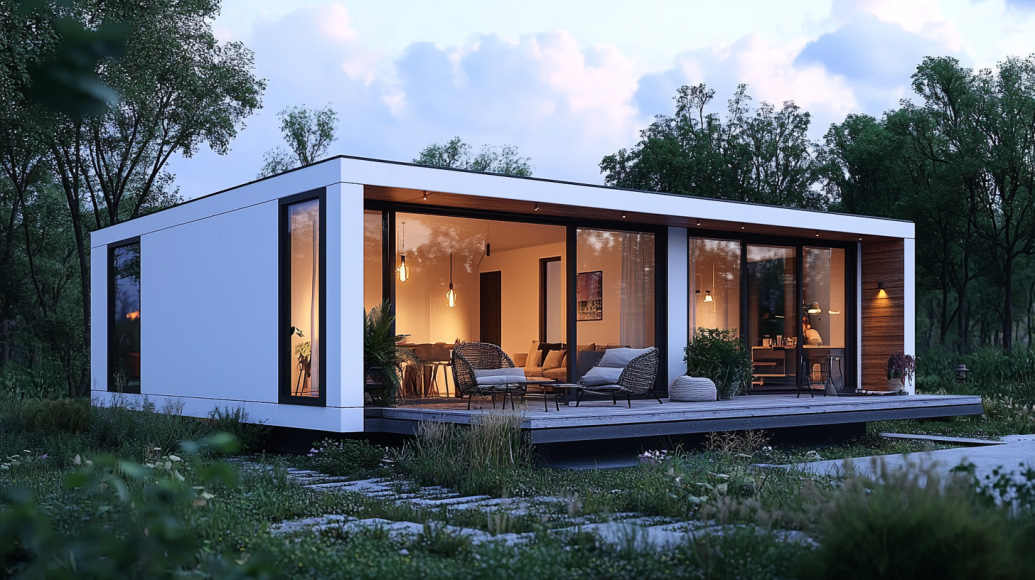Modular and Prefab Methods Used in the Construction of Homes
by Jeffrey C Kadlowec, Architect
Abstract
Desire for affordable and sustainable housing is becoming a driving force behind the construction industry. Innovations in manufacturing technology have begun to make modular design and prefabrication methods the logical choice for the future of housing. Utilization of these approaches should lead towards substantial cost saving. Coupled with material choices like bamboo over traditional wood, concrete and steel have led to the concept of the ‘Tiny Home’. Public opinion will become more accepting of these small houses as demand and needs increase.
Keywords: modular design, prefab construction, sustainable materials, tiny homes

Modular Prefab
The great Finnish architect, Alvar Aalto once stated in an interview [Peter 1994], “One of the great problems for an architect today is to save the human being—to make individualism of collectivism.” With rapid population growth, the current economic crisis, and recent environmental disasters, the need for affordable and sustainable housing has moved into the forefront of discussions throughout the construction industry. Future decisions will be based on lessons learned from the past. Architectural achievements have always been a testament of the ingenuity of humans throughout the world.
Although manufacturing techniques have always relied on economy of scale, the Industrial Revolution brought about great innovations through mechanical automation. Humans, like many other animals, have always used tools throughout their daily lives, though it was invention of machines to mass produce those tools that sets us apart from the rest of the animal kingdom. Anyone familiar with the work of French architect, Le Corbusier, will know his famous quote, “The house is a machine for living in.”
Modular construction offers a variety of potential cost saving opportunities. Speed is increased by reduction of time involving workers [Hořínková 2021]. Production costs are lowered through assembly line operations. Architectural design remains flexible by arrangement of modules, while occupational hazards are reduced in a control factory environment. These gains must be weighed against the complexity of transportation of modules to site, while factoring in the added costs of planning and coordination involved [Pervez 2022]. Setup costs of a production plant and a reluctance in the industry towards a modular approach should also be considered.
The concept of ‘tiny homes’ emerged over the past decade, due in part to rising land costs in dense urban areas. This has been compounded by increases in material and labor costs during the current inflationary cycle. These homes range in size from 60 to 400 square feet, with most around 200 [Boyer 2022]. The idea is reminiscent of the western expansion that occurred in the United States and borrows from recreational vehicle culture with the idea of a home on wheels.
Bamboo is used as a building material throughout Asian and the Pacific Islands. With more focus on sustainability, it has grown more popular throughout the rest of the world. Bamboo is durable, flexible, lightweight, and low in cost; it is also easy to cultivate and process [Boruah 2022]. Several barriers currently exist in the ‘tiny home’ movement—though common with many emerging markets. State and local governing agency require regulations and oversight. Current building codes and zoning codes do not address this niche of home construction.
Human-centered design is based on observations of the needs and desires of people [Boruah 2022]. The modern ethos of the American Dream is centered around buying and owning one’s own home. Modular and prefabricated systems have many benefits that support that vision, while bamboo could be the preferred material over wood and concrete for resilience and steel due to lower costs [Zhang 2022]. Although recent events have created physical distance in the interpersonal dynamic of the work environment, new information technology has simultaneously brought people closer together in ways not possible in the past. As these boundaries continue to blur and individuals strive for more connection with one another, we will see a shift towards a collectivist culture. Local and regional economies are no longer isolated and a global-centric and united ideology is forming in minds across the world.
References
Boruah, Dipanka. (2022). A Human Centered Approach to Redesign Prefab and Modular Bamboo Houses. 10.1007/978-3-030-94277-9_81.
Boyer, K & Simons, A. (2022). Creating a Tiny Home Building Code to Positively Affect Long-Term Sustainability. IOP Conference Series: Materials Science and Engineering. 1218. 012013. 10.1088/1757-899X/1218/1/012013.
Hořínková, Dita. (2021). Advantages and Disadvantages of Modular Construction, including Environmental Impacts. IOP Conference Series: Materials Science and Engineering. 1203. 032002. 10.1088/1757-899X/1203/3/032002.
Pervez, Hamza; Ali, Yousaf; Pamucar, Dragan; Garai-Fodor, Mónika & Csiszarik-Kocsir, Agnes. (2022). Evaluation of Critical Risk Factors in the Implementation of Modular Construction. PLOS ONE. 17. e0272448. 10.1371/journal.pone.0272448.
Peter, John. (1994). The Oral History of Modern Architecture: Interviews with the Greatest Architects of the Twentieth Century. H.N. Abrams.
Zhang, Yinchen. (2022). Research on the Current Situation and Prospect of Green Building Technology in China. Highlights in Science, Engineering and Technology. 28. 133-140. 10.54097/hset.v28i.4098.



